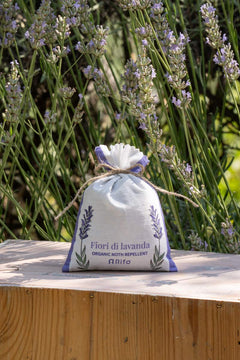Over the years, an increasing focus on the theme of sustainability and environmental impact has revived ancient techniques of fabric recycling that were fading away. This is how recycled cotton is born, an alternative solution to the use of intensively produced virgin cotton, one of the most polluting fibers in the textile industry. In this article, we delve into what recycled cotton is, how it is produced, and all the environmental benefits of choosing it.
What is Recycled Cotton?
Recycled cotton is obtained through complete recycling of waste from other processes. These scraps undergo a processing called ciclo rigenerato (the regenerated cycle), where they are worked to obtain an entirely new fabric.
Currently, there are no processes capable of recycling old cotton garments to create quality yarn. Used cotton garments are more challenging to recycle because the fabrics are often patterned and have mixed and synthetic compositions. That's why it's considered a pre-consumer process and recycled yarn, as opposed to post-consumer.

How Recylcled Cotton is Obtained
To recycle cotton, selected scraps are sorted by color and then reduced to fiber through a carding process.

It is then necessary to add a certain percentage of virgin fiber or polyester to obtain a durable new yarn. A fully recycled cotton yarn does not currently exist on the market since it would not have suitable technical characteristics for use.
For this reason, to create our sustainable cotton garments, including the entire knitwear line and t-shirts, we chose a yarn composed of 50% recycled cotton and 50% organic cotton grown on a small scale, without the use of pesticides and with reduced water consumption.

Environmental Damage of Virgin Cotton
Conventional virgin cotton represents about 33% of all fibers in garments. This means that most clothing worldwide is made from intensively cultivated, large-scale cotton, without regard for its environmental impact.
Every year in the world, no less than 18 million tons of cotton are produced. However, only 0.7% of this is organic, while 99.3% is conventional cotton, cultivated through the massive use of herbicides and pesticides.

The impact of cotton cultivation affects climate change. Throughout its production cycle, an item made of organic cotton requires 62% less energy than its conventional cotton equivalent.
To produce a single t-shirt with conventional virgin cotton, about 5510 liters of water are currently used. The same amount that an adult consumes in 7 and a half years of life. Considering the quantity of t-shirts produced worldwide, it's easy to imagine how much water-intensive cotton production requires.
All this represents a real danger to the environment, not only due to soil water depletion but also because of the massive use of pesticides. Over time, we have witnessed environmental disasters like the Aral Sea in Uzbekistan. Since the 1960s, diverting watercourses that fed it to irrigate fields for intensive cotton cultivation has led to the drying up of this salt lake, leaving behind infertile land soaked in pesticides.

Overall, there is environmental damage to rivers, lakes, seas, and entire ecosystems. Throughout Asia, 70% of rivers and lakes are contaminated by the 11.3 billion liters of wastewater produced by the textile industry, mostly unregulated. As a result, populations living near these water basins, relying on them, suffer from a high incidence of tumors, gastric problems, and skin issues.
Cost of Recycled Cotton vs. Virgin Cotton
If intensively cultivated virgin cotton is one of the most widely used textile materials globally, there is a reason: it is very economical.
Cultivation on a massive scale, in countries where labor costs are very low and with no care for the planet, makes it possible to market conventional cotton at half the price of the recycled cotton we use, approximately €4/kg versus €8/kg.

The major cotton producers are China (with about 5 million tons/year), the United States (with 4 million tons/year), India (2.5 million tons/year), followed by Egypt, Pakistan, Uzbekistan, Turkey, Australia, Argentina, Brazil, Greece, Sub-Saharan Africa, and South America, each with smaller shares.
Given such a low starting fiber value, it is evident that recycling represents an additional cost and not an economic advantage. Recycling costs more than intensively cultivating cotton, which benefits from economies of scale, and this should not be surprising. In the costs of textile recycling, one must always consider manual selection of scraps, color sorting, and the resulting industrial process.
The choice to purchase recycled cotton garments cannot be dictated by price advantage but by the desire to change one's approach and try to reduce one's impact on the environment.
As always, the most sustainable choice for the planet is not necessarily the most economical for those of us who inhabit it.
Advantages of Recycled Cotton
So why choose a Rifò t-shirt made from recycled cotton and organic cotton instead of a conventional virgin cotton t-shirt produced and sold cheaply by fast fashion chains?
Recycled fabrics, such as recycled cotton or wool, retain the same properties as the original product but have a far lower environmental impact.
Let's compare the data, visible on the product pages of Rifò online shop, coming from the Life Cycle Assessments measured by Bcome.
A recycled cotton t-shirt allows for drastically reduced water and energy consumption compared to a virgin cotton t-shirt, which, on the other hand, contributes to soil depletion caused by intensive cultivation.

Furthermore, by choosing our recycled t-shirts, you can be assured of ethical, locally-produced garments made in Italy. Our production takes place less than 30 km from our office and avoids the exploitation of labor in countries where adequate protections for workers are not guaranteed.
| Impact of Cotton used | for a Rifò T-shirt |
for a conventional virgin cotton T-shirt |
| 💧Water consumption | 2900 liters = 45 bottles |
5510 liters = 86 bottles |
| 💡CO2 consumption | 79 days of a light bulb being on |
113 days of a light bulb being on |
| 🪡Production | Made in Italy |
Outsourced |











